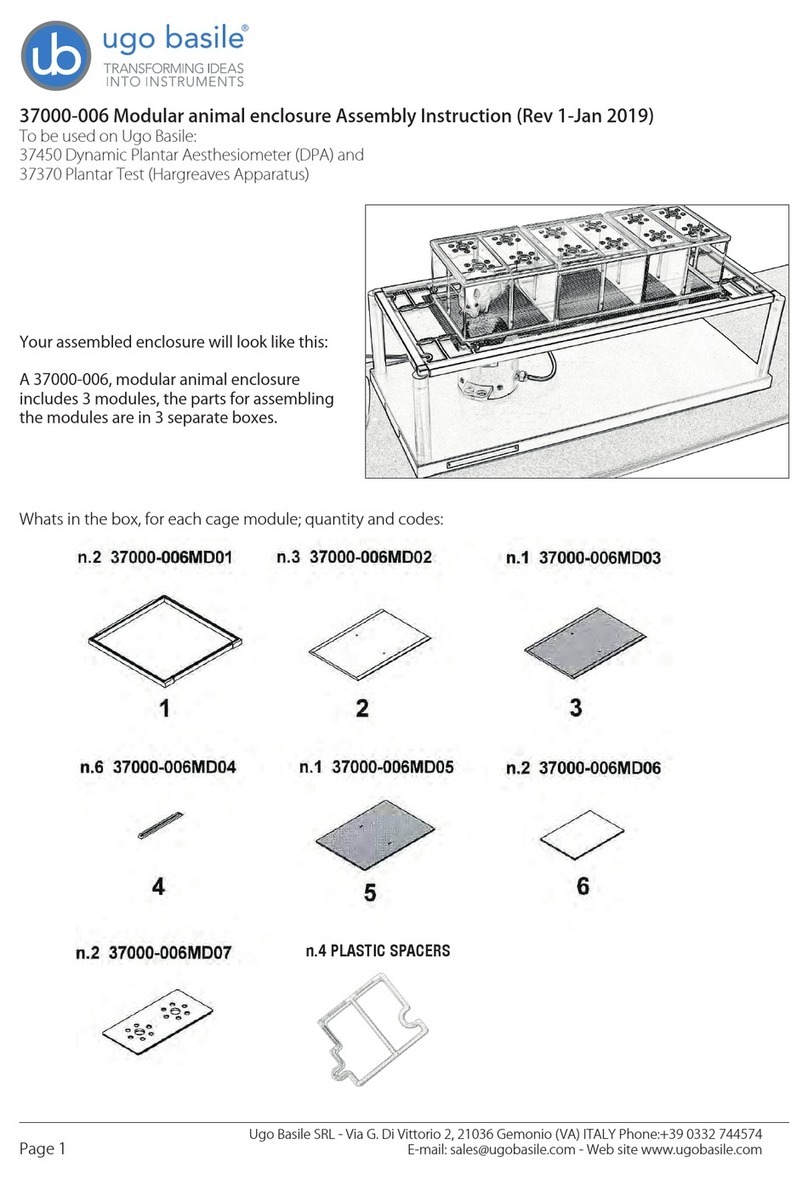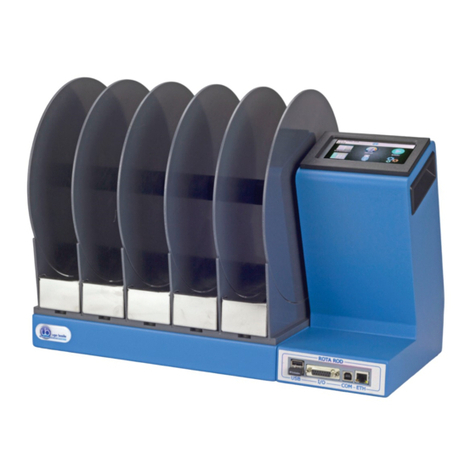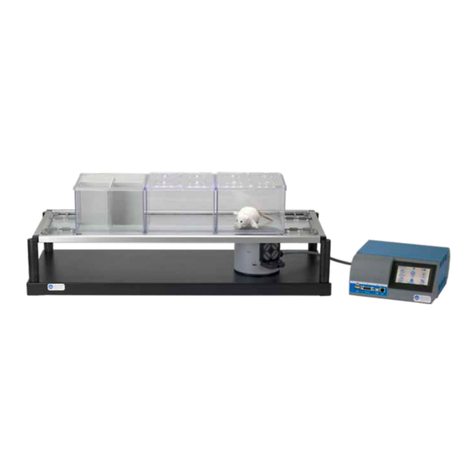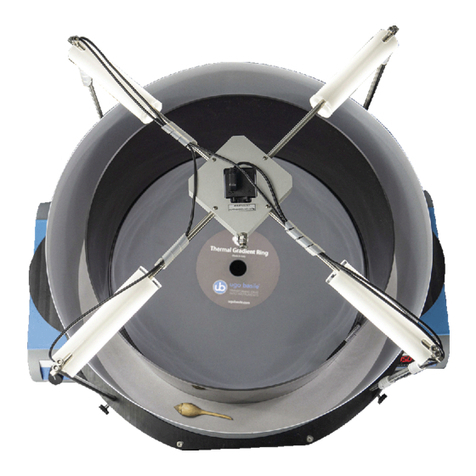
Page i
37370 Instruction Manual (Rev. 0)
C O N T E N T S
1GENERAL ..........................................................................................................1
1.1PRINCIPLE OF OPERATION .....................................................................................1
2INSTRUMENT DESCRIPTION...........................................................................2
2.1THE MOVABLE I.R. SOURCE (HEAT STIMULATOR)...................................................2
2.2THE PLATFORM/GLASS-PANE/ENCLOSURE ASSEMBLY ...........................................2
2.2.1ANIMAL ENCLOSURE 3
2.3CONTROLLER .......................................................................................................3
2.3.1COMMAND DISPLAY MODULE 3
2.3.2GRAPHIC DISPLAY 4
2.3.3KEYBOARD 4
2.3.4FUNCTION KEY ABBREVIATIONS 4
3DATA ACQUISITION & DATA PRINT-OUT ......................................................5
3.1DATA PORTABILITY ...............................................................................................5
3.2PANEL-MOUNT PRINTER 37000-145......................................................................6
3.357145 MINIPRINTER .............................................................................................6
4INSTALLATION .................................................................................................6
4.1UNPACKING &PRELIMINARY CHECK ......................................................................6
4.2NOTES ON THE INSTRUCTION MANUAL ....................................................................7
4.3ASSEMBLING THE EQUIPMENT................................................................................7
4.3.1ASSEMBLING &POSITIONING THE ENCLOSURE 7
4.3.2HOW TO HANDLE THE PLANTAR TEST 7
4.4ENVIRONMENT ......................................................................................................8
4.5BEFORE APPLYING POWER....................................................................................8
4.5.1FUSE HOLDER 8
4.5.2MAIN SWITCH 8
4.5.3MAINS CORD 9
4.6CONNECTIONS ......................................................................................................9
4.6.1BACK PANEL 9
4.7INSTALLATION OF CUB SOFTWARE ......................................................................10
4.8INTENDED USE ....................................................................................................10
4.9GENERAL SAFETY INSTRUCTIONS.........................................................................10
4.10ADDITIONAL SAFETY CONSIDERATION ..................................................................10
5OPERATION ....................................................................................................11
5.1SWITCHING ON...................................................................................................11
5.2DISPLAY CONTRAST ............................................................................................11
5.3SETTING I.R. INTENSITY.......................................................................................11
5.4CARRYING OUT THE TEST ON THE ANIMAL.............................................................12
5.4.1NOTE ON WET SURFACES 12
5.5DURHAM HOLDERS FOR OROFACIAL STIMULATION ................................................12

































